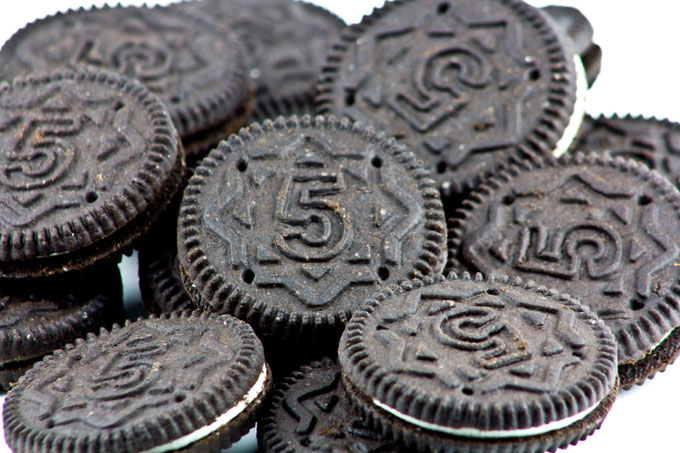
Get Rid Of Unhealthy Food Cravings Once And For All!
One of the most challenging hurdles of the paleo transition is learning to manage cravings for the once beloved foods that are not paleo-approved. Many believe that the only way to overcome this hurdle and cultivate vibrant health is to wage war and annihilate cravings. However, ignoring cravings is rarely sustainable. It may work for a while, but eventually your body will revolt.
We’ve all been there.
Fortunately, there is an alternative approach that is far more likely to lead to long term results. To understand this approach, it’s important to remember these four little rules:
- Cravings are not the enemy.
- Not all cravings are bad.
- Cravings should never be ignored.
- Cravings can be a window into deeper issues.
Contrary to popular belief, cravings are not always destructive. In fact, cravings have several origins that serve as indicators of our physical and emotional health. As a student at the Institute for the Psychology of Eating I learned that there are 3 types of cravings: associative, supportive and destructive. Let’s briefly discuss each type:
Associative
Associative cravings are those that have a deep and meaningful relationship with our past. Velveeta Shells & Cheese, for example, conjures feelings of family, warmth and tradition for me. If there are foods that you notice yourself craving when walking down memory lane, it is likely the result of an associative craving.
Supportive
Supportive cravings occur when the body is in a deficient state. They signal the need to restore balance. When you crave chocolate, for instance, it may be due to a magnesium deficiency.
Destructive
Destructive cravings are caused by a distorted yearning in the body. They are commonly the result of addiction, blood sugar instability, or bacterial imbalance. When indulged regularly, these cravings can degrade health rapidly.
Although many associate ALL cravings with a lack of self-discipline, associative and supportive cravings can actually promote health! Destructive cravings, on the other hand, are the ones that we want to learn to identify and eliminate as quickly as possible. By following the tips below you can begin to make this important distinction…
Step 1: Breathe and notice the craving.
In the midst of your chocolate-chip cookie craving, take a second to pause. Fight the urge to react immediately to the craving and instead take 5 slowwww, deep breaths. Breathe in through your nose for a count of 4…...hold your breath at the top for a count of 2……..and exhale through the mouth for a count of 6. This will help relax your nervous system allowing you to investigate the source of your craving while in a calm, balanced state.
Step 2: Scene Check.
Investigate your environment. Where are you? Whom are you with? What bodily sensations are you experiencing?
By becoming acutely aware of what is happening during your craving, you will begin to notice patterns, people, places, things and circumstances that spark them.
Step 3: Emotion Check.
Notice exactly how you are feeling when your craving strikes. Identify your predominant emotion. Are you happy? Sad? Tense? Lonely? Excited? Tired? Bored? Upset? Fearful? Disappointed?
Many times cravings are the result of emotional triggers. By learning to identify our triggers, we can avoid these situations or at least modify the way we choose to react. Many times eating will not resolve these issues until they are investigated further.
Step 4: Name the craving.
Once you have identified the environmental and emotional context, dig a bit deeper. Identify the type of craving you’re experiencing. Ask yourself:
Is it associative?
Am I overwhelmed with nostalgia or missing a food (or person) I loved from my past?
Is it supportive:
Am I craving something my body actually needs to support my health?
Is it destructive?
Will the food I am craving harm my health? Is it so intense that I am driving to the grocery store to buy Ben and Jerry’s at midnight?
Step 5: Be your best friend.
After you have identified the type of craving you are experiencing, decide whether acting on it is health supportive. Allow yourself to indulge only if it will benefit your health.
In general, supportive cravings get a green light. It’s important to remember that cravings for processed foods, fried foods or sugar do not fall in this category. Be sure that these cravings are for foods that support your health such as fruits, vegetables, or high quality fat or protein.
Associative cravings are the trickiest because they can be good, bad and neutral. For instance, if you love eating spaghetti with your family, indulging in this pleasure may outweigh its cost. However, if you are gluten intolerant, you will do more harm than good. In order to master associative cravings, you must learn to balance your individual needs, emotional needs and health goals. Please remember that you should always avoid foods you are allergic or sensitive to.
Destructive cravings are the only type of craving that I will firmly ask you to ignore. Unfortunately, these are generally the most intense. You can recognize these cravings because they are most often for foods that you KNOW are not health supportive. These foods include processed foods (potato chips, cookies, cake), refined carbohydrates (bread, crackers), and sugar (candy, soda, desserts).
Destructive cravings are often an indicator of unstable blood sugar, sugar addiction, bacterial imbalance or emotional needs that aren’t being met. Rather than act upon these cravings, investigate and address their root cause.
Step 6: Replace your destructive craving.
Often, the decision to ignore a destructive craving can leave you with a void. In order to increase your chances of long-term success, try to always fill this void with a more health-supportive behavior.
Find an appropriate behavior by conducting a pleasure inventory. Write down your top ten favorite non-food things to do. For instance, my top ten are:
1. Back scratch from my husband
2. Midday hike at Torrey Pines
3. Calling an upbeat friend or family member
4. Hot bath
5. Massage
6. Dancing
7. Watching a dance video
8. Funny movies or Youtube clips
9. Sending a great friend an uplifting text
10. A hot cup of organic rooibos tea
These activities will take your mind off of the craving and simultaneously transform your mood to ward off future cravings.
If your out-of-control cravings have kept you from achieving your health goals in the past, please use these 6 steps to re-write your story.
Remember, not all cravings are the enemy! By questioning and evaluating each one before you act, you will be better able to make conscious dietary decisions that cultivate vibrant health.
Here’s to getting to know your cravings!






